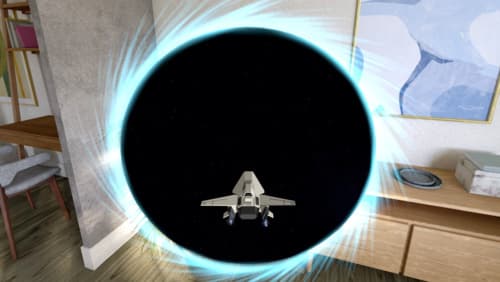How to create macOS app with realitykit?
Asked on 2024-11-02
1 search
To create a macOS app with RealityKit, you can follow a process similar to building apps for other Apple platforms like iOS and visionOS. RealityKit provides high-performance 3D simulation and rendering capabilities, allowing you to create immersive spatial computing apps. Here's a general approach based on the content from WWDC:
-
Start with Xcode: Begin by creating a new Xcode project. You can use templates that are suitable for macOS development.
-
Use RealityKit APIs: RealityKit offers a variety of APIs for 3D content creation. You can use these APIs to blend your 3D content seamlessly with the real-world environment. This includes capabilities for rendering, simulation, and spatial tracking.
-
Integrate with SwiftUI: Combine RealityKit's 3D capabilities with SwiftUI to build interactive user interfaces. This integration allows you to customize the appearance and behavior of your app's UI elements.
-
Explore New Features: WWDC sessions highlighted new features in RealityKit, such as low-level mesh and texture APIs, which provide improved control over your app's appearance. These features can be particularly useful for creating dynamic models and textures.
-
Debugging with RealityKit Debugger: Utilize the RealityKit debugger to capture and inspect 3D scenes within Xcode. This tool helps you troubleshoot and optimize your app's performance.
For more detailed guidance, you might want to check out the session Discover RealityKit APIs for iOS, macOS and visionOS (25:29) which covers cross-platform capabilities, including macOS. Additionally, the session Build a spatial drawing app with RealityKit (05:42) provides insights into building a spatial user interface, which can be adapted for macOS.

What’s new in USD and MaterialX
Explore updates to Universal Scene Description and MaterialX support on Apple platforms. Discover how these technologies provide a foundation for 3D content creation and delivery, and learn how they can help streamline your workflows for creating great spatial experiences. Learn about USD and MaterialX support in RealityKit and Storm, advancements in our system-provided tooling, and more.

Build a spatial drawing app with RealityKit
Harness the power of RealityKit through the process of building a spatial drawing app. As you create an eye-catching spatial experience that integrates RealityKit with ARKit and SwiftUI, you’ll explore how resources work in RealityKit and how to use features like low-level mesh and texture APIs to achieve fast updates of the users’ brush strokes.

Discover RealityKit APIs for iOS, macOS and visionOS
Learn how new cross-platform APIs in RealityKit can help you build immersive apps for iOS, macOS, and visionOS. Check out the new hover effects, lights and shadows, and portal crossing features, and view them in action through real examples.
